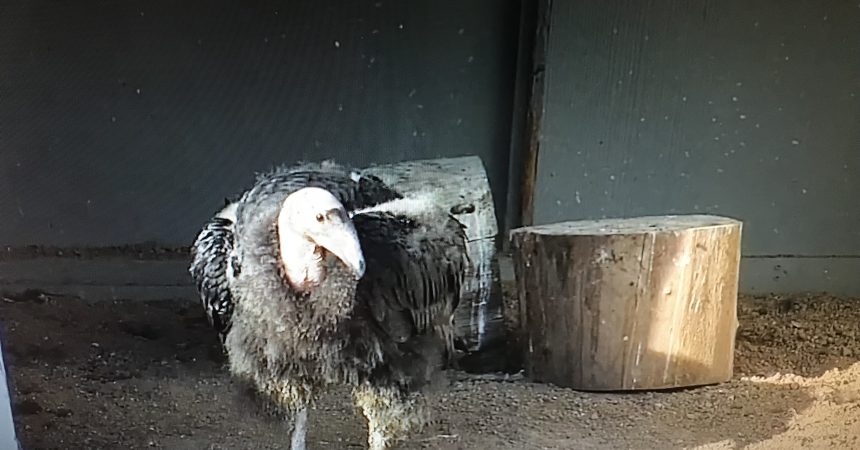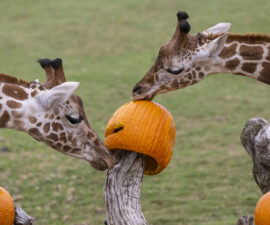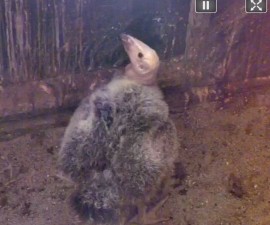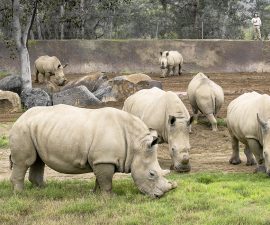As many Condor Cam viewers have witnessed, the rearing process for a California condor chick can be long and slow. It makes sense, though, for a condor to develop so slowly. She has lots of growing to do. When our chick, Kitwon (pronounced “KEET-won”), hatched, she weighed approximately 6.3 ounces (180 grams). When she reaches her fledge weight of 17.5 pounds (8 kilograms) or more, she will have increased her hatch weight by 44 times! I, myself, have only increased my birth weight by 19 times.
On July 14, at 106 days of age, Kitwon took her most recent step toward leaving the nest: she jumped up onto the barrier between her nest box and the adjoining roost area. She later hopped back into her nest, but that’s OK. There’s no hurry to fledge, or leave the nest, just yet. Her feathers still need time to fill in all the way. In the meantime, hopping up and down from the barrier exercises her muscles, as well as improves her balance. On July 24 (116 days old), she hopped into the roost area on the other side of the barrier for the first time. While out in the roost, she can also rest or sleep in the shade, perch with her parents (if they are not perched out in the flight pen), or step out to the roost ledge to soak up the sun’s rays for the first time. The ledge is about 8 feet above the ground—high enough to make the parents feel comfortable and secure in their nest, but not as high as a condor nest in the wild. Kitwon may get near the edge, but she will be cautious in doing so, so she doesn’t teeter off. It is natural for condor chicks to explore and exercise on the edge of their nest cavities.
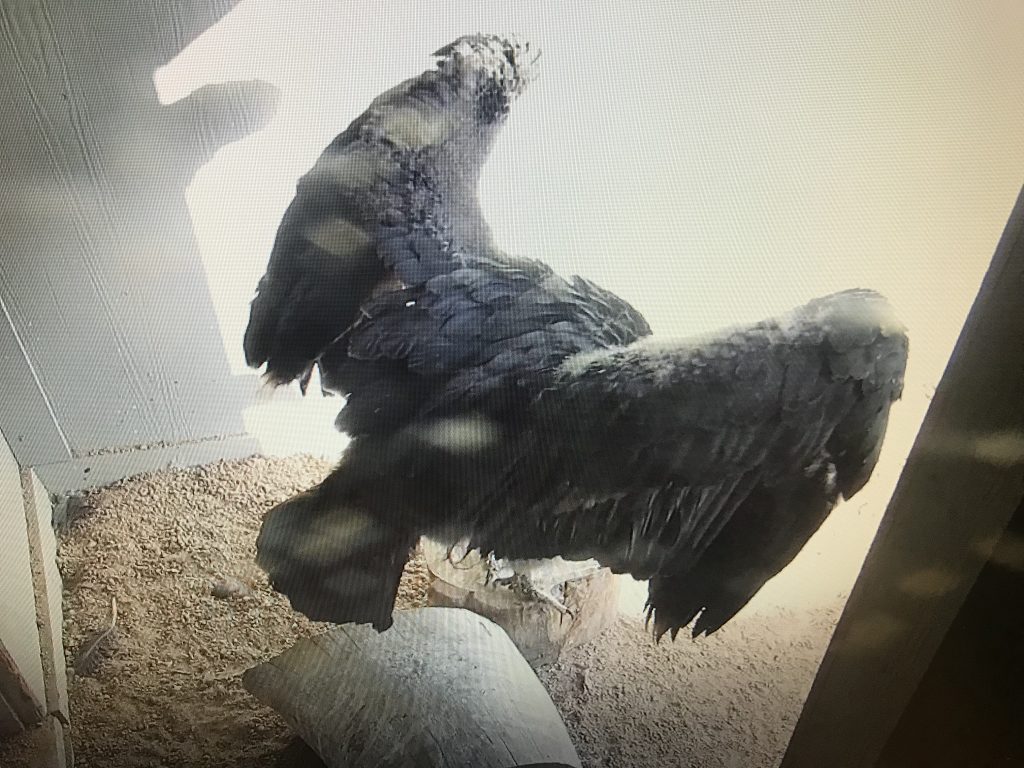
Kitwon stretching her wings in the sun in the roosting area.
The next step of Kitwon’s development will be to fledge. When she is ready, she will jump off of the 8-foot high nest ledge. She will either slow her fall to the ground below the ledge, or fly to a nearby perch. We consider her fledged when she can get up on a perch by herself. California condor chicks can fledge anywhere between 140 and 170 days of age. It all depends on the chick.
Condor parents tend to be very vigilant at this phase of their chick’s development. It can appear over-protective to us, but keep in mind that they have invested an entire breeding season and lots of energy into this one chick. It benefits them greatly to make sure that their sole offspring is safe, healthy, and strong. They usually don’t coax or pressure their chick to leave the nest; on the contrary, we have seen parents make sure that it doesn’t stray too far from the nest if it’s not ready yet. The parents will usually perch and/or roost near the fledgling. They also will join her when she finally starts going to the feeding area of the flight pen. Most of the time, though, they will push her aside and they will eat first, feeding her when they are done. In “condor culture,” the bigger, more dominant birds usually eat first, while the subordinate birds wait their turn. The earlier Kitwon learns this from her parents, the better she will assimilate into a wild population after she is released. Don’t worry—Sisquoc and Shatash won’t let Kitwon starve. They will continue to feed her even when she is out in the flight pen. Eventually, she will eat more and more on her own.
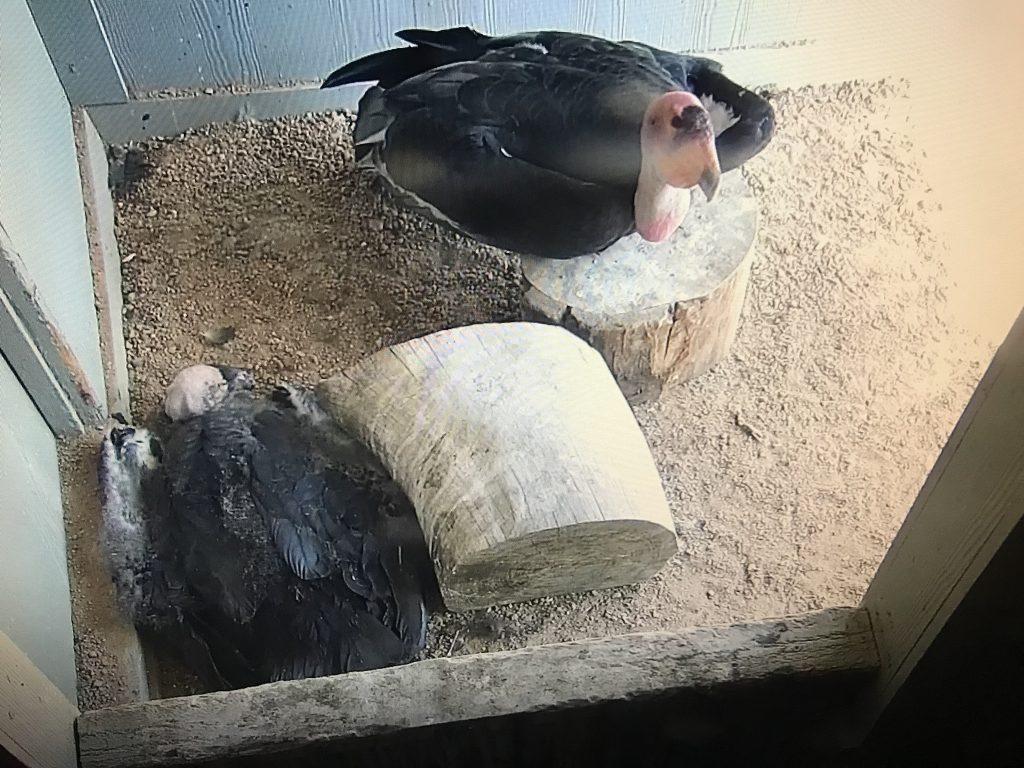
Shatash (at top) spending time in the roost with (possibly napping) Kitwon.
Condor Cam viewers may have seen some rough-looking interactions between the chick and her parents. What may have been happening was a form of discipline. As the chick has gotten bigger, her begging displays and efforts have gotten more vigorous. These efforts can sometimes be bothersome or problematic for parents that just want some peace and quiet. The parents have two ways to make sure that the chick does not cause too much trouble while begging. They can leave immediately after providing food, or they can discipline the unruly chick. This discipline can come in the form of the parent sitting or standing on the chick, or the parent may nip or tug at it, either of these behaviors results in the chick being put in its place by the dominant bird in the nest, thus ending the undesired behavior. This is perfectly normal for condors to do, even though it would be cruel for us to treat our own babies like that! When condors fledge, or leave the nest, they need to know how to interact with dominant birds at a feeding or roost site. This seemingly rough behavior from the parents will benefit the chick later when it encounters a big, unrelated bird that might not be as gentle.
Thanks so much to all of our faithful and dedicated Condor Cam viewers. Soon, your support and devotion will be rewarded when our “little big girl” spreads her wings and takes that next step. Rest assured, though, that Kitwon’s story will be far from over!
Ron Webb is a senior keeper at the San Diego Zoo Safari Park. Read his previous blog, Kitwon Update.

